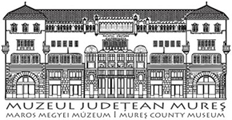Marisia - Maros Megyei Múzeum Évkönyve 33/4. (2013)
Articles
Another Early Iron Age Zoomorphic Clay Figurine from Tärgu Мищ Fig. 2. Early Iron Age porcine representations. 1. Teleac (after Horedt et al. 1962, without scale); 2-3. Teleac (after Vasiliev 1986); 4. Baks (after Szabó 2011); 5-6. Tili?ca (after Lupu 1989, without scale); 7. Lysychnyky, UA (after Maleev 1996); 8-9. Lechin(a de Mure? (after Horedt 1963). individuals were discovered at Raco§-Piatra Detunatá,25 six individuals at Media?-Gura Cámpului, five at Teleac, three at Bernadea and one at Media$-Cetate and Zau de Cämpie-Lu Grädinifä,26 For the Early Iron Age - and obviously the previous period - the crossbreeding between pig and wild boar was presumed.27 Zoomorphic representations are not so much characteristic for a culture;28 they are rather a common symbol of the period and area.29 The majority of the pieces date from the HaB-HaC period, but they were found also in HaA contexts.30 Generally, the anthropomorphic representations were dated largely, between 1200 and 600 BC.31 The observations according to which the Early Iron Age zoomorphic figurines have a unitary character, that they are of fine paste and are well fired, finely executed and their dimensions are corresponding to the proportions of the real animals,32 or that some are presenting artistic valences33 cannot be generalized unreservedly, especially if taking into consideration the objects from Tärgu Mure?. For the contemporaneous Cozia-Saharna culture three types of cultic places or sanctuaries have been defined: domestic, territorial and cultic centres, the clay figurines - among them the zoomorphic ones - discovered in houses being seen as an argument for the first category.34 In the case of the figurines from Visegrád the wild boar - previously considered tapir - was endowed with cultic functions because of the inventory of the pit in which it was found together with a pair of tusks, while the rest of the figurines were interpreted as toys; the perforated horse figurine was considered a toy put in the front of a clay wagon.35 Their cultic role connected to fertility and fecundity36 or domestic magic and ritual practices,37 or cultic accessories38 may be questioned even because of 25 el Susi 2009, 231-234. 26 Bindea 2008, 101-105. 27 el Susi 2009, 232-233. 28 László 1994, 90. 29 Maleev 2007, 74; Sana - Bejinariu 2010, 172. 30 Sirbu 1987, 108; the two pieces discovered at Chinari were dated to the HaA2-HaBl period (Rezi - Nagy 2009, 103-104). 31 Metzner-Nebelsick 2000, 164. 32 Sirbu 1987, 108; László 1994, 90; Ardeu - Bälos 2003, 184. 33 Vasiliev et al. 1991, 145. 34 Kamuba 2003, 192. 35 Gróh 1984, 62; Gróh 2009, 29. 36 Gróh 1984, 62; Vasiliev 1986, 80; László 1994, 90; Leviftá 1994, 111; Ursache 1999, 45; László 2001, 307; Szabó 2002, 52; Ardeu - Balos 2003, 185. 37 Sirbu 1993, 132-133; Sirbu 2004, 361. 38 Maré? et al. 2008, 88.
